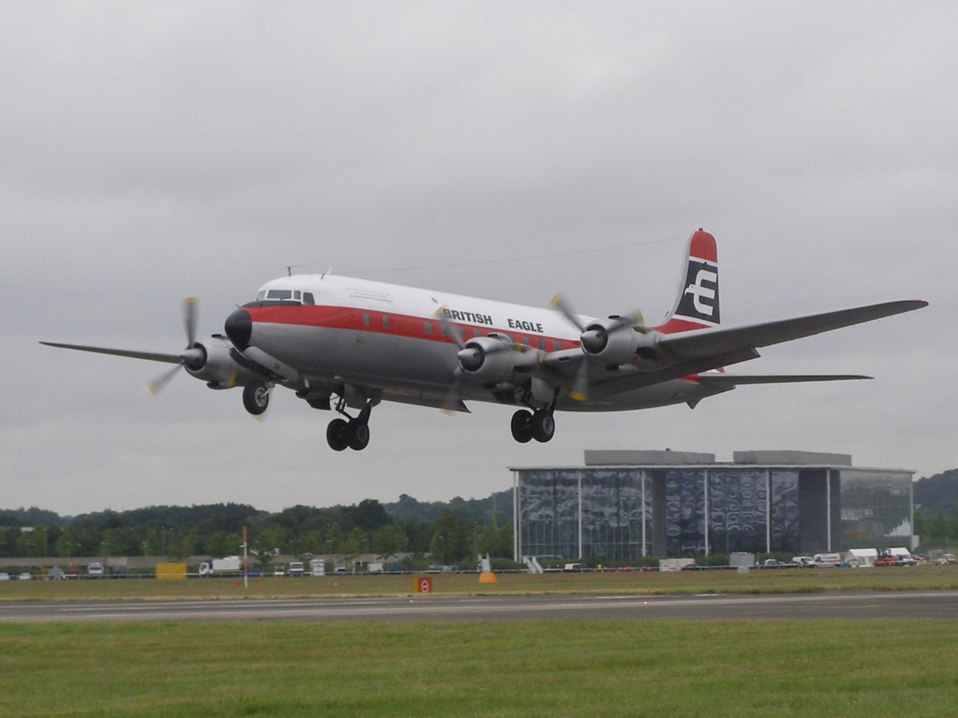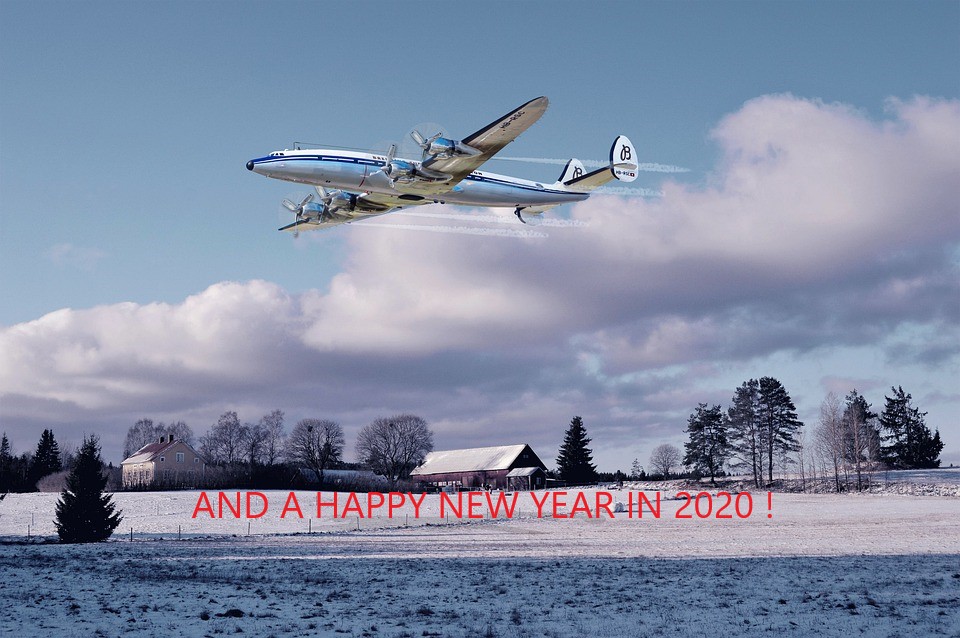



With another year drawing to a close let us take the traditional look back at what’s been happening here at Duxford over the past 12 months. 2019 saw a large number of anniversaries affecting our collection and aviation in general. The big ones were the first flights 50 years ago of Concorde and the Boeing 747. Our BAC 1-11 also saw air under its wings for the first time in 1969 and the Comet celebrated the world’s first flight by a jet airliner 70 years ago.

In June Duxford celebrated 75 years since D-Day and we were treated to the sight of 23 Dakota types including the very rare Russian built Lisunov Li-2 from Hungary. DAS volunteers were active for the three-day event acting as flight-line stewards and helping out wherever possible. At the end of their visit to the UK the entire Daks over Normandy fleet took off for France and the D-day beaches. This really was a once in a lifetime event and we were lucky to be part of it. Other Duxford air shows included the usual Spring/Legends/Battle of Britain trio all of which were supported by our volunteers with flight line supervision, stewarding, military vehicle rides and shop sales.

The beginning of the year saw a rude awakening from the excesses of Christmas and the New Year.The first day Duxford re-opened our Viscount was positioned into the AirSpace hangar for a repaint. Volunteers worked non-stop for ten day to enable ‘WF to roll out of the hangar on time looking as good as new. A couple of weeks later, just like buses all coming along together, we were offered another slot in the hangar. Anxious not to miss the opportunity the Trident took its place inside ready to be attacked by paint and rollers. She too came out with her BEA livery suitably refreshed and returned to her parking place on the flight line with only a few finishing touches outstanding.

The Britannia had the last of its clouded windows replaced and work then started on cleaning and removing corrosion from the propellers. The engine cowlings on the right hand side were also removed for polishing. Whilst these were off work started on cleaning up and repainting the mighty Proteus engines. Our two French students who were with us for work experience spent a long time working on this project. The Viscount got a new set of tyres and the Herald’s front galley was finally fitted out with coffee makers etc. Planning is ongoing to use the rear of the Herald cabin as a display area and hopefully there will be something to see for all the work in 2020. In the same vein the Hermes fuselage is going to be turned into a stand alone museum covering the story of post-war British commercial aviation as part of the greater project of the British Airliner Collection museum accreditation

Work continued on the VC10 corrosion removal programme with underbody panels, the freight bay floor and even the top of the tailplane receiving attention. The focus as we come to the end of the year is on the undercarriage doors and bays. This year saw the 40th anniversary of SGC’s last commercial flight.
The Ambassador has once again got its radome refitted and the faded paintwork on the central fin has also been repainted. This aircraft was this year’s film star when a movie company used it for scenes in a film about the Munich air crash.


Back in the workshop restoration has continued on our small tug which is now back on its wheels. It has been pushed out of the workshop for the time being to enable our big tug to come in for some much needed bodywork attention. This work along with maintenance of the passenger access steps to the outside aircraft, will take up most of the winter months when weather stops play outside.

This year also saw a concerted effort to spread the word via Instagram and Facebook with regular posts often getting a very good response from all around the world. If you haven’t seen these just search British Airliner Collection on either platform. So what does next year hold? Well we kick off on 1 January celebrating 55 years since our VC10 first flew, so I guess it will be much the same as 2019. Let’s hope so.
Whilst we are in a nostalgic frame of mind let’s look back even further to 1948 when that fondly remembered airline British Eagle came into being. During its existence Eagle operated a number of the types we have in the British Airliner Collection. Eagle Aviation was formed by Harold Bamburg with two ex-wartime Halifax bombers converted into freighters to fly fruit and vegetables to and from his base at Bovingdon. The Halifaxes were later joined by a number of Avro York aircraft which flew both freight, trooping flights and passenger charters. The growing airline moved its base briefly to Luton in 1950 before moving again to Blackbushe in 1952.

By 1953 the airline began to fly ex-BEA Vickers Vikings on passenger flights from its base at Blackbushe airport on behalf of BEA. The following year it took over the Sir Henry Lunn travel firm and branched into the new Inclusive Tour holiday market. In the mid- sixties it took on another travel firm Polytechnic travel and formed the now well know Lunn-Poly travel firm operating all the holiday flights for that agency. 15 days in Spain could be had for £35! The arm of the company operating these flights was known as Eagle Airways. A Viscount was purchased and put to work flying Bermuda- New York flights. In 1958 these Bermuda routes were linked to London when Eagle Airways began flying Douglas DC-6 aircraft on long range flights.

In 1960 the Cunard steamship line bought a 60 per cent holding in Eagle Airways. This investment allowed the airline to become the first UK independent to operate pure jets when it ordered two Boeing 707s in 1961. It also resulted in the airline changing its name to Cunard-Eagle airways. Britannias had begun to join the fleet and they were used to replace the DC-6 on the transatlantic routes. 1960 had also seen the closure of Blackbushe and the airline re locating to Heathrow. When the 707s arrived in 1962 they replaced the Britannias on the routes across the Atlantic. By now the Cunard company had the major share in Cunard-Eagle and when approached by BOAC, who were far from happy with the competition Eagles were providing across the Atlantic, they agreed to form BOAC-Cunard bringing the two Boeing 707s into the BOAC fold.
Harold Bamburg was not happy with the way things were going with what was once his airline so in 1963 he bought back control from Cunard and renamed the airline British Eagle International and started flying with a fleet of Viscounts and Britannias.

By 1965 the airline was operating 17 Britannias and 7 Viscounts and had returned to profitability. In the same year, in an effort to return to operating jets, British Eagle ordered three BAC 1-11 aircraft followed later that year with an order for two Boeing 707s for long haul flights. The following year the 1-11s began service on the domestic routes out of London starting with Glasgow.
In 1968, when the airline celebrated its twentieth anniversary, it was ranked the fourth largest airline in the UK flying 24 aeroplanes, eight of which were jets. However all was not well as with the introduction of the £50 foreign exchange limit inclusive tour bookings fell dramatically. Coupled with the ending of Far East trooping flights and Australian migrant flights, the airline had to make redundancies and cost cuts. Sadly, it was too late and by November 1968 the airline had gone into voluntary liquidation and the name British Eagle vanished from our skies.

So that’s about it for 2019. I hope you have enjoyed our regular articles and I’ll finish with just a bit of information about the closing picture. Some of you may have great memories of the two visits the Swiss based SCFA Super Constellation made to an air show at Duxford. Sadly following the loss of their Breitling sponsorship, huge maintenance costs to address some deep rooted corrosion and stricter operating rules imposed by the Swiss government, the SCFA have reluctantly called it a day. They had been unable to raise the money for the repairs and have sold the aeroplane to a group in Germany who intend to repair and fly her again. The Connie has been dismantled and by the time you read this will have been trucked to its new home in Germany. Let’s just hope all goes well with the new plan and it’s not too many years before she graces the sky over Duxford once more.
‘Till the next time Keith

Registered Charity No. 285809